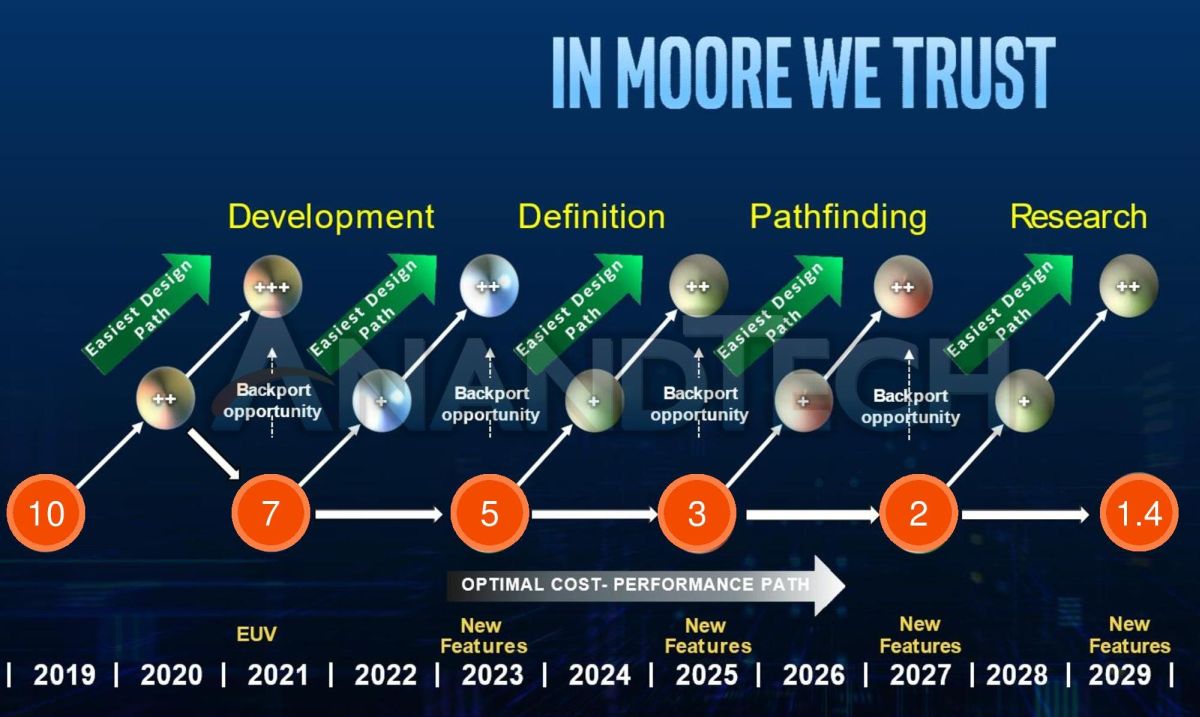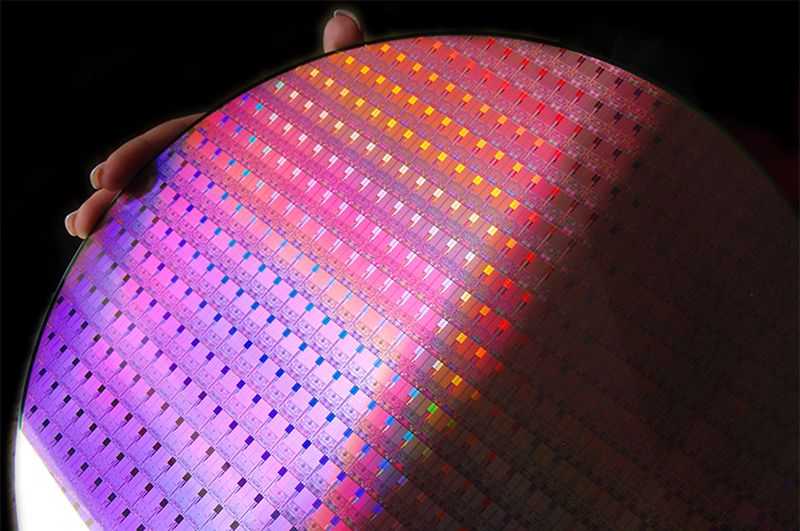The slide, courtesy of AnandTech, shows that the Intel is expected to release a new die lithography every two years, starting with the 10nm. Followed by a 7nm manufacturing process in 2021, 5nm in 2023, 3nm in 2025, 2nm in 2027, and 1.4nm process in 2029. For the record, this is the first time any mention of a 1.4nm die lithography has been mentioned; AMD’s own roadmap for its Ryzen CPU hasn’t even reached the 5nm process. On a side note, it’s clear from the top-right of the slide that Intel isn’t quite ready to let go of the ageing Moore’s Law. It’s hard to blame them, especially since the observation essentially served as the backbone to virtually all of Intel’s older CPUs, including the current 14nm process.
You’ll also notice that, in between each process node, there “+” and “++” symbols. For those unfamiliar with the markings, these indicate different versions of the process node that will be made to fill up the gap between any two manufacturing process. For example, when the 7nm process nodes releases in 2021, Intel will theoretically release 7nm+ and 7nm++ derivatives of the CPU in 2022 and 2023, before the release of the next generation of Intel CPUs. The only exception here being the 10nm, which already has a 10nm+. To that end, Intel will be making a 10nm++ and 10nm+++ in the years 2020 and 2021, respectively.
There’s also the mention of “back porting” in the slide; as the name suggests, back porting will theoretically allows Intel to design one process node in mind while allowing it to be remade on an older “++” design. All things considered, the next decade is going to be interesting for both Intel and consumers, especially since the semiconductor maker is currently in “pathfinding” mode with the 3nm, 2nm, and 1.4nm process node. As it stands, the company is already looking at new materials and transistor designs, as well as other scientific methods that would make such dies possible in the future. (Source: AnandTech)

